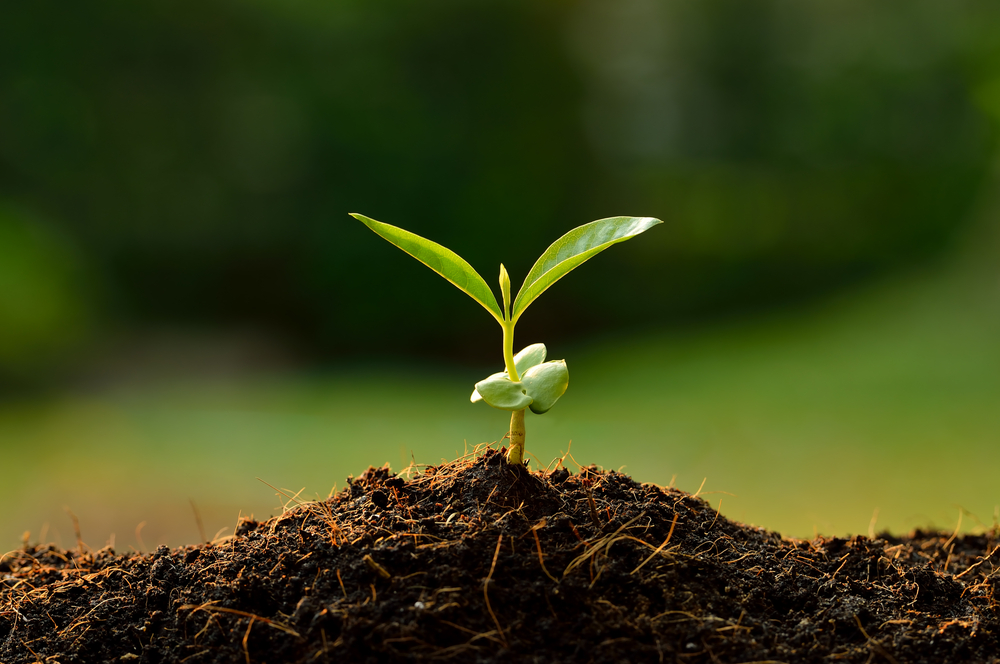
Image Source: shutterstock.com
Ever notice how plants seem to come alive underground just as the days start getting shorter? It’s not your imagination—nature has a secret rhythm, and autumn is when roots do their real heavy lifting. While leaves fade and flowers drop, the real action is happening below the soil line. The shorter days and cooler air tell plants to stop showing off above ground and start investing in what really matters: strong, resilient roots.
It’s a fascinating seasonal switch that keeps your garden thriving year after year—and once you understand it, you’ll never look at fall the same way again.
The Science of Seasonal Signals
Plants don’t just react to sunlight—they listen to it. As days shorten, the change in daylight triggers hormonal shifts inside the plant, especially involving a growth regulator called auxin. When daylight decreases, auxin levels guide energy away from leaf and stem production and funnel it downward to root systems. This shift allows plants to strengthen their foundation in preparation for winter dormancy. In short, shorter days are nature’s way of saying, “Time to focus on your roots!”
Energy Shift: Less Light, More Power Below
During the long summer days, plants are obsessed with growing taller, fuller, and greener. But as sunlight hours drop, photosynthesis slows, and the plant’s “energy priorities” change dramatically. Instead of powering more leaves, that stored-up energy is redirected underground to build and expand root systems. The roots absorb nutrients, anchor the plant, and set it up for explosive growth when spring returns. It’s like a plant’s version of off-season training—less showy, but absolutely vital for future success.
Cooler Soil, Happier Roots
Here’s the part many gardeners overlook: cooler soil temperatures during shorter days create the perfect environment for root growth. Warm soil with cooler air reduces stress on plants, allowing roots to expand without drying out. The balance helps prevent root rot and encourages deeper, stronger development. Plants can comfortably absorb oxygen and nutrients while maintaining steady moisture levels. So while the top of the plant may look sleepy, the underground world is buzzing with activity.
Photosynthesis Doesn’t Stop—It Just Rebalances
Even as daylight decreases, plants don’t simply stop photosynthesizing; they just do it more strategically. Shorter days mean fewer energy surges, so plants learn to use every bit of light more efficiently. That smaller but steady energy supply gets stored as carbohydrates in the roots, fueling growth even when photosynthesis slows. Think of it as the plant putting extra money in its savings account before the winter “off-season.” This stored energy is exactly what allows strong regrowth when the days lengthen again.

Image Source: shutterstock.com
Shorter Days = Less Stress
Summer might be great for beach days, but it’s tough on plants. High temperatures, long daylight exposure, and dry conditions put stress on the entire system. As days shorten, the reduction in heat and light gives plants a break—and when stress drops, root activity naturally increases. That’s why transplanting or fertilizing in the fall often yields better long-term results than doing it in the heat of summer. The calmer environment lets roots settle, spread, and strengthen without competition from heavy top growth.
Dormancy Is Really Just Root Season
When most people think of dormancy, they picture lifeless plants waiting for spring. But in truth, this “resting” phase is more like quiet preparation. Shorter days tell plants to go underground—literally—where they invest time and energy in creating new root tissue. While the top of the plant slows down, the roots are busy expanding, absorbing nutrients, and building reserves. When spring finally arrives, those hidden investments pay off in a burst of vibrant growth above ground.
Gardeners’ Secret: Fall Planting Power
Ask any seasoned gardener, and they’ll tell you—fall planting is like giving your plants a head start. Because shorter days encourage stronger root development, plants installed in the fall establish faster and outperform those planted in spring. The roots have months to grow quietly before the stress of summer heat returns. Shrubs, perennials, and even trees benefit from this underground momentum. So next time you think gardening season is over, remember—it’s actually prime time to grow stronger roots for next year’s blooms.
Nature’s Long Game: Survival Through Balance
Nature never wastes energy; it redistributes it wisely. The shift in growth patterns during shorter days is nature’s built-in survival strategy, ensuring plants can withstand the challenges of winter. Deep, sturdy roots mean better water and nutrient access when conditions get tough. It’s a remarkable example of how balance—not constant growth—leads to long-term resilience. The shorter days might look like a slowdown, but for the natural world, it’s really a season of smart preparation.
The Quiet Magic Beneath the Soil
Shorter days may signal the end of summer’s showy display, but they mark the beginning of something far more important: stronger, deeper, smarter root growth. As daylight wanes and the air cools, plants redirect their energy underground, building the foundation for next year’s success. Understanding this cycle helps gardeners and plant lovers appreciate that growth isn’t always visible—it’s often happening where we can’t see it.
Have you noticed stronger plants after fall planting or cooler weather? Share your stories, insights, or garden victories in the comments below—we’d love to hear your experiences!
You May Also Like…
4 Advantages of Pruning Plant Roots
Why Some Bulbs Fail if Planted Too Late in Fall
Why Fall Pruning Sets Trees Up for Spring Growth
9 Plants That Attract Pollinators in the Cool Months
The Science Behind Fall Color Changes in Plants
Leave a Reply